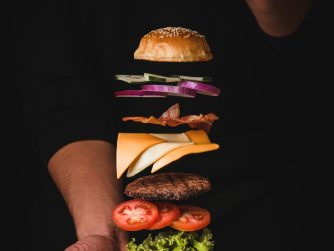What is Vitamin D?
– There are 2 sources of Vitamin D – Sun and Dietary ( this also includes supplementation )
– There are 2 forms of Vitamin D, cholecalciferol (D3) and ergocalciferol (D2).
Cholecalciferol (vitamin D3) is formed through the action of ultraviolet B (UVB) radiation (wavelength, 290–315 nm) on 7-dehydrocholesterol in the skin. This is the main determinant of vitamin D status, as most adults are unlikely to obtain more than 5%–10% of their vitamin D requirement from dietary sources.
Both forms of vitamin D are transported to the liver and metabolised to 25-OHD. This is the major circulating form and the metabolite routinely used to assess overall vitamin D status.
What are your vitamin D levels?
I personally like to see clients levels above 80nmol/L. Even higher in the lead up to winter!
Why we need Vitamin D?
Vitamin D has multiple functions in the body and make it very very important. There has been a huge increase in the amount of people deficient and this is also why so many functional practitioners like to see good levels year round.
Some of these functions are:
☀️ Bone Health
☀️ Immune Health
☀️ Cardiovascular Health
☀️ Helps Insulin secretion
☀️ Regulation of cell cycle
Sunlight and Vitamin D
A major source of vitamin D for most humans is synthesized from the exposure of the skin to sunlight typically between 10am and 3pm in the spring, summer, and Autumn.
Vitamin D produced in the skin may last at least twice as long in the blood compared with ingested vitamin D.
When an adult wearing a bathing suit is exposed to one minimal erythemal dose (MED) of UV radiation which is a slight pinkness to the skin 24 h after exposure, the amount of vitamin D produced is equivalent to ingesting between 10,000 and 25,000 IU.
So what’s this mean?
Skip the chemical laden sunscreen and opt for a more natural one or limit your exposure to your 1 MED, keep your body’s optimal nutrition and low toxin level and inflammation low to protect you from sun damage and optimise vitamin absorption.
What effects absorption of Vitamin D from both Sun and Supplement?
☀️Skin colour and density of melanocytes and melanin ( these inhibit D3 biosynthesis)
☀️Age
☀️Sunscreen
☀️Time in the sun, time of day and season.
☀️The latitude you live at.
☀️Conditions such as Crohns, Celiac, Chronic Pancreatitis and general poor gut function and absorption.
☀️Adequate fat intake and fat soluble vitamin consumption and absorption.
What can help your response to the sun?
☀️Safe exposure over time – Not too much too soon.
☀️Healthy diet and good nutrient and mineral levels.
☀️Safe amount of time in the Sun. Smart Exposure.
☀️Astaxanthin is a red carotenoid found in shrimp, crab, salmon and microalgae. It has been shown to have an impact on the epidermis acting as a antioxidant to protect the skin.
Sun and grounding are the most basic and essential things for good health.








